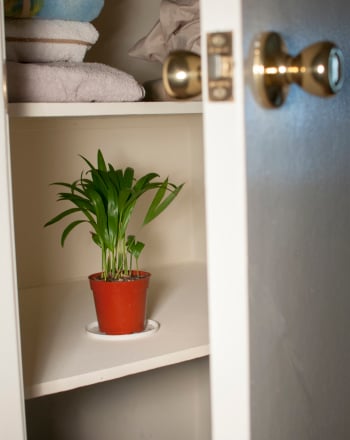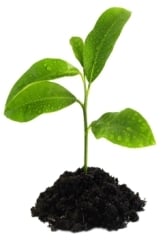Science project
Thirsty Plants
Grade Level: 4th - 8th; Type: Life Science
Objective:
To determine whether landscaping fabric impacts the ability of plants to receive water.
Research Question:
How does landscaping fabric impact the flow of water to plant roots?
Mulching is a popular and versatile gardening technique. Mulch tends to be a bulky substance that gardeners place in, around, or on the garden. It serves a number of purposes. A layer of vegetation placed on the garden can help the garden maintain moisture and heat levels in the summer and winter seasons. Digging mulch plants into the soil can add nutrients and improve air and water flow in the garden. Mulch is also popular as a way to control weeds.
One way to control weeds using a simple barrier is through the use of landscaping fabric. By placing a barrier on the ground, this fabric prevents weeds from popping through from the soil below. Can this fabric barrier also limit the flow of essential nutrients and water to the roots of plants? In this experiment, you will determine whether a popular simple weed control mechanism changes the flow of water to plant roots.
Materials:
- 2 large pots
- 2 plants with a taproot
- Scissors
- Enough landscaping fabric to go over 1 large pot
- Soil moisture meter
- Watering can
- Notebook and pen
Experimental Procedure:
- Get two large pots, two plants, and enough landscaping fabric to cover the top of one of the pots. Choose plants that have a taproot.
- Place the soil in the pots. Moisten the soil in the pots. Check the soil moisture levels with the moisture meter to ensure that they are at the same level.
- Place the pots on a sunny shelf indoors if it is winter. Place them outside in a covered area if it is summer.
- Cut landscaping fabric to cover the top of one of the containers. Cut a small hole in the middle so that the plant has a place to stick through the fabric.
- Care for the plants in the same way. Water the plants the same amount every time you water them.
- Every time you water the plants, make a note of the leaf color of the plants. Is it green or are there sections that are yellow or brown?
- Every time you water the plants, make a note about how distressed each plant looks. Are its leaves wilted?
- Every time you water the plants, place a soil moisture into the plant pot about an hour after watering. Take note of the moisture reading. Most house plant soil moisture meters have a scale of 1 to 10.
- After at least a month, end the experiment. Take the average of the moisture readings from each pot. Place these averages as two bars on a bar graph. Compare the two averages. Was the soil in one pot consistently damper than the soil in the other pot, or were they the same? Based on your observations of plant health, was one plant healthier than the other?
10. Based on your observations, does the presence of landscaping fabric change soil moisture levels?
Terms/Concepts: Learn why people use landscaping fabric; Learn how to use landscaping fabric; Learn what landscaping fabric is made of
References:
The Gardener’s Escape – Different Types of Mulch, Advantages and Disadvantages.
North Coast Gardening. Is Landscaping Fabric Right for You?
Education.com provides the Science Fair Project Ideas for informational purposes only. Education.com does not make any guarantee or representation regarding the Science Fair Project Ideas and is not responsible or liable for any loss or damage, directly or indirectly, caused by your use of such information. By accessing the Science Fair Project Ideas, you waive and renounce any claims against Education.com that arise thereof. In addition, your access to Education.com's website and Science Fair Project Ideas is covered by Education.com's Privacy Policy and site Terms of Use, which include limitations on Education.com's liability.
Warning is hereby given that not all Project Ideas are appropriate for all individuals or in all circumstances. Implementation of any Science Project Idea should be undertaken only in appropriate settings and with appropriate parental or other supervision. Reading and following the safety precautions of all materials used in a project is the sole responsibility of each individual. For further information, consult your state's handbook of Science Safety.













